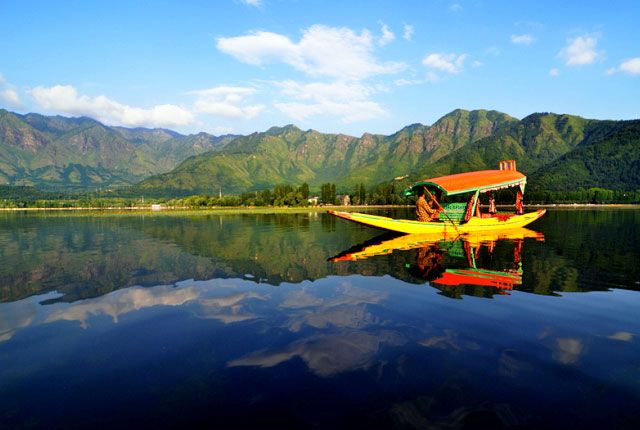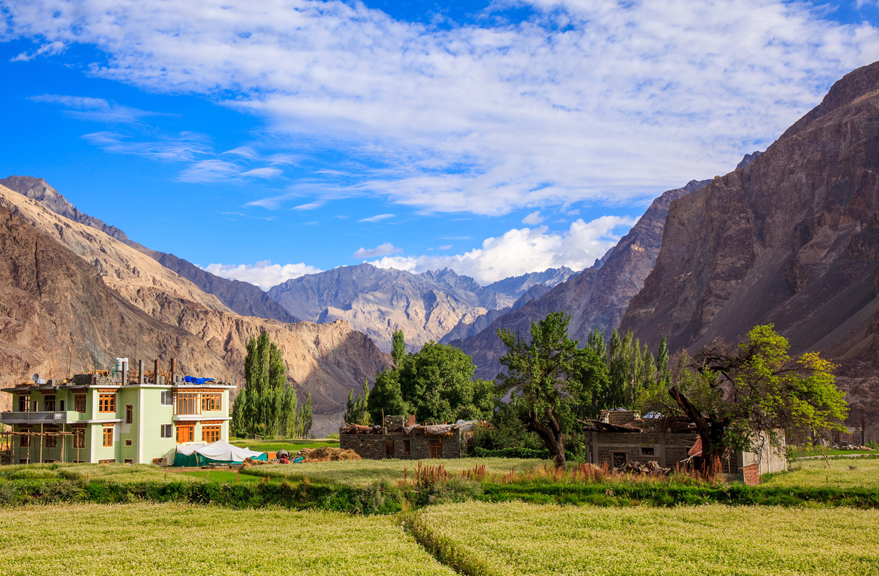
Turtuk Village : Where Culture and Nature Meet
Table of Contents
ToggleOverview
Known as a stunning and undisturbed village located in the majestic Nubra Valley of Ladakh, Turtuk is still undiscovered by the majority as it is positioned in the northernmost area of India. Rich in history, exotic culture blended with nature’s beauty enfolds breathtaking sceneries which makes it an ideal place to relax off the beaten path. The combination of Turtuk’s untapped and pristine beauty along with its historical and unique cultural fused aspects makes it one of the most intriguing hidden gems of India. In this travel guide, we will help you through the mesmerizing history, culture, natural beauty, travel tips, and everything you want to know for an unforgettable visit to Turtuk.
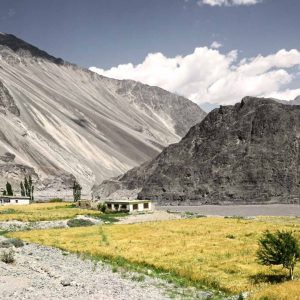
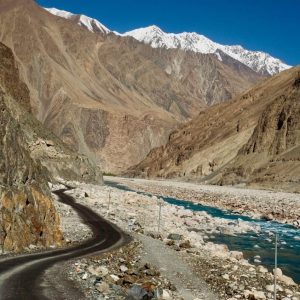
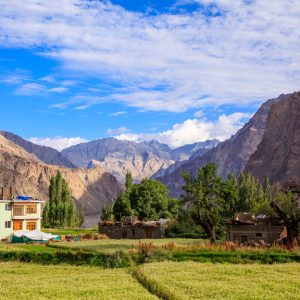
An Introduction to Turtuk: Why It’s Worth Visiting
Ladak’s capital, Leh, is located roughly 205 kilometers from Turtuk, which is positioned on the bank of Shyok River. While the Nubra Valley is famous among tourists for its exquisite sand dunes and cold desert, Turtuk still remains one of the hidden gems in India and is untouched by mass tourism. Turtuk is ideal for tourists seeking an authentic experience in Ladakh, as it is rich in natural beauty, historical importance, and cultural amalgamation.
Turtuk’s Location: The Gateway to Nubra Valley
Known for its magnificent landscapes, Turtuk is situated at the northern extreme of the Nubra Valley. It is located near the border with Pakistan and the village’s location as its portions were affected by the Indo-Pakistani conflict has resulted in a unique mix of cultures. This region also serves as a convenient stop for many travelers going to Khardung La, which is one of the highest motorable passes in the world.
Turtuk is known for being part of the Baltistan region which was previously a part of Pakistan. It ceased to be so after the Indo-Pak war in 1971 and has since been incorporated into India. The village is a fusion of cultures which is why it is among the most culturally diverse places in India.
The Culture and History of Turtuk Village
Turtuk has a rich past, just as rich as the history of conflict that has surrounded the region. Turtuk was part of the Baltistan region until 1971 when it was annexed to India’s territory after the Indo-Pak war. This intermingling of cultures and traditions gives rise to astounding heteroglossia and a range of valuable assets, as Turtuk is now home to diverse Buddhist Tibetan and Islamic traditions.
The Balti Influence
The Balti people hail from Baltistan and belong to the Tibetan ethnicity. They follow two religions, Tibetan Buddhism and Islam which creates a rich amalgamation of architecture, food, and lifestyle. The village is also predominately Muslim as most of the populace are Shia Muslims. Tibetan Buddhist influences are however abundant in the more artistic and architectural practices.
Balti is a local language in the region, blending Urdu and Tibetan, which adds more cultural richness. Visitors to Turtuk can witness the Baltis’ way of life, which includes colorful festivals, traditional cuisine, clothing, and other customs.
Effects After 1971: Shift in Geopolitics
Turtuk used to be a part of Gilgit-Baltistan in Pakistan and was under their control after the Partition. Post the Indo-Pakistani War of 1971, Turtuk along with many other areas became parts of India. This event in the village’s history changed its political and cultural context dominantly stripping it from the rest of the Indian subcontinent for many decades. At present, Turtuk is one of the few places in India where the fusion of Pakistani and Indian culture can be experienced.
Geographical Attractions of Turtuk
Turtuk is a village rich in scenic beauty captivating nature enthusiasts, photographers, and trekkers. Standing at an impressive 3050 meters (10000 feet) elevation, bordering the Shyok River endows the region with fascinating views. The area contains a diverse mix of tall mountains, green valleys, beautiful alpine meadows, and scenic water streams.
The Shyok River: A Serene Natural Beauty
Known to be the life force of Turtuk, the Shyok River passes through the village and adds beauty and fertility to the harsh landscape. Shyok River, a tributary of the Indus River, passes through Ladakh and Gilgit-Baltistan. The contrast between the green riverbanks and the dry mountainous regions creates a remarkable scene which is both calming and strikingly beautiful. Strolling beside the banks of the Shyok River, one is able to experience nature in solitude, so much so that one can indulge in self-introspection and capture breathtaking views.
The Majestic Surrounding Peaks
Because of the snow-covered mountains, Turtuk has long enjoyed the towering peaks of the Karakoram Range, one of the most rugged mountain ranges in the world. These peaks indeed have a dominating presence across the landscape. Not just for their beauty, the mountains surrounding Turtuk are also a playground for trekkers and mountaineers. In addition to the vast Nubra Valley, the entire region boasts countless ridges, passes, peaks, and many other places, making it a true paradise for explorers.
Trekking and Hiking in Turtuk
The proximity of Turtuk to the mountains and valleys of Ladakh makes it ideal for trekking. Turtuk trekking routes such as the one leading to Yarab Tso Lake, which is famed as one of the most picturesque and peaceful locations in Ladakh, offers astonishing views.
Trekking Highlights:
- Yarab Tso Lake: Yarab Tso Lake is a small sacred lake about two kilometers from Turtuk that is not well known. The way to the lake is a stunning easy walk through greenery. The lake, flanked by snow-capped peaks, is peaceful and scenic.
- Turtuk to Hunder: The alpine meadows, hills, and villages along the moderate trek from Turtuk to Hunder are gorgeous. This trek showcases the Ladakhi landscape really well.
- Nubra Valley Exploration: The well-known routes of Nubra valley also cover the surrounding green valleys and desert areas, and most seasoned trekkers would often go beyond the cold desert into the more uninhabited part of the region.
Optimal Timing for Visiting Turtuk Village
Because of it position at high altitude and close proximity to the Karakoram Range, Turtuk experiences extreme climate. Turtuk is best visited between the months of May to September. Daytime tems lie within the sweet spot of 15-20 degrees celsius, and the nights can get refreshing rather than too chilly.
The area region is exceptionally cold from winter (November to March), with temperatures frequently dropping below freezing. When it snows during the winter season, the area transforms into a serene wonderland. However, it is more diffcult to travel in winter due to harsh weather combination of closed roads and freezing conditions.
Primary Landmarks and Activities in Turtuk Village
Turtuk provdes something for everyone, be if you are looking for cultural adventures or nature walks. Below sums up some attractions or activities that you can take part in while visiting the village.
- Go on a short trek to the Turtuk Monastery
The Turtuk Monastery is located about 2 kilometers away from the village. It is important Buddhist Monastery along with the Turtuk Valley for tourists. The monks living in the Monastery follow the Tibetan Buddhism and various rituals and prayers take place in front of the visitors. Panoramic views of Nubra Valley can also be seen from this place. The Monks here are very friendly and welcoming, with visitors often amazed by their gentle prayers and ceremonies.
- Enjoy the Architecture and Life of The Locals
The locals of Turtuk have a very friendly nature. Most of them will enjoy sharing their stories with tourists. Learn about their unique social life, nutrition, traditions, and the calture with a unique life style which is maintained from centuries. Their wooden houses are considered one of the finest creations from the Baltis’ culture and add more to the rich heritage which is showcased throughout the villages.
- Uncover the Region’s Cuisine
The Turtuk region exhibits strong Tibetan, Balti, and Kashmiri influences in its unique cuisine. Some of the must-try local specialties are Balti bread, meat stews, and momos (dumplings). Another highlight is tsampa (roasted barley flour), often served with tea, which provides energy to sustain the physically active lifestyle of the locals and is a staple in the Balti diet.
- Bactrian Camel Ride at Hunder Sand Dunes
Just a short drive from Turtuk, Hunder Sand Dunes is a unique experience where visitors can ride the native Bactrian camels, the two humped camels. Riding a camel through the sandy desert of Nubra Valley is one of the most exciting and memorable adventure activities, and offers visitors an alternative way to explore the desert landscape.
How to Reach Turtuk Village
Reaching Turtuk from Leh is itself an adventure. Here’s a step by step guide on how to reach the village:
– By Road: Turtuk is approximately 205 kilometers from Leh which is reachable by road via Nubra Valley. The journey takes about 6-8 hours and is contingent on the road conditions as well as other stoppages throughout the journey. One of the most stunning features of the road is the Khardung La which is claimed to be the highest motorable pass in the world. The views of the landscapes are breathtaking.
– By Air: The nearest airport to Turtuk is in Leh which is easily connected to major cities of India like Delhi, Mumbai, and Srinagar. You can take a local taxi or jeep to Turtuk from Leh.
Where to Stay in Turtuk
Although Turtuk does not have luxury hotels available, the village offers an assortment of accommodation ranging from guest houses to homestays. Staying in a homestay grants you the opportunity to immerse into the local lifestyle and experience the home-cooked Balti food.
Accommodation options include:
- Homestays: Visitors are welcomed by the local families into their homes providing cozy rooms along with authentic home-cooked meals which provide visitors a taste of Balti culture.
- Camps and Guesthouses: There are several guesthouses and campsites in Turtuk that have basic amenities and breathtaking views of the mountains.
Sustainable Tourism of Turtuk
With tourism starting to increase in Turtuk, considerable attention is being given to sustainable tourism in an effort to protect the environment and local culture. The member of the local community has adopted sustainable tourism principles by calling upon visitors and travelers to use the environment wisely, minimize waste, and buy from local shops.
Conclusion: Turtuk, a Hidden Paradise of Ladakh
Turtuk is certainly among the most beautiful places of Ladakh. It is rich in the history and cultural diversity. For adventure, history, or simply away from tourists, Turtuk is the perfect place to escape and relax. The stunning natural landscapes, intriguing culture, and friendly locals make your trip to this hidden village worthwhile. So, when you are marking your calendar for the next trip to Ladakh, don’t forget to include Turtuk in your checklist. It’s certainly one of the untouched treasures of India.
How to book Ladakh tour?
Contact a travel agency that specializes in Kashmir tours. You can reach out to the following for assistance:
- Phone:
- +91 7889 655596
- +91 7006 891267
- Email:
Inquire about tour packages, itineraries, and pricing, and confirm your booking for a memorable winter experience!
People Also Ask
What is Turtuk Village?
Turtuk is a small village located in the Nubra Valley of Ladakh, India. It is known for its unique Balti culture, scenic beauty, and its position as the northernmost village of India, bordering Pakistan-administered Gilgit-Baltistan.
Where is Turtuk Village located?
Turtuk Village is situated in the Nubra Valley of Ladakh, approximately 200 kilometers from Leh, the capital of Ladakh. It lies near the India-Pakistan border, making it one of the most remote villages in the region.
How do I reach Turtuk Village?
To reach Turtuk, you need to travel to Leh first. From Leh, you can take a road trip to Nubra Valley via the Khardung La pass and then head towards Turtuk, which is about 80 kilometers from Diskit, the main town in Nubra Valley. The road conditions are generally good, especially in the summer months.
Is Turtuk Village open to tourists?
Yes, Turtuk Village is open to tourists. Since it is located near the India-Pakistan border, visitors need to obtain an Inner Line Permit (ILP) to visit the village. This permit can be arranged through a travel agency or the authorities in Leh.
What is the best time to visit Turtuk Village?
The best time to visit Turtuk Village is during the summer months, from May to September, when the weather is pleasant and the roads are accessible. Winters can be harsh with heavy snowfall, making travel difficult.
What makes Turtuk Village unique?
Turtuk is unique because of its rich cultural heritage, which is influenced by its proximity to Pakistan. The village is home to the Balti people, who follow Islam and have cultural similarities with the people of Gilgit-Baltistan. The landscape is breathtaking, with lush green fields surrounded by towering mountains.
Are there any accommodations in Turtuk Village?
Yes, there are a few guesthouses, homestays, and small hotels in Turtuk Village. These offer basic amenities and an authentic experience of Ladakhi hospitality. Staying in a homestay allows visitors to experience the local way of life.
What cultural experiences can I expect in Turtuk Village?
In Turtuk, you can experience the unique Balti culture, which includes distinctive architecture, local food, traditional clothing, and religious practices. Visitors can also learn about the village’s history, visit mosques, and enjoy traditional Balti music and dance performances.
Can I visit Turtuk Village as part of a tour?
Yes, Turtuk is often included in tours of Nubra Valley. Many travel agencies in Leh offer guided tours that include visits to Turtuk, along with other nearby attractions such as the Diskit Monastery, Hunder Sand Dunes, and Panamik Hot Springs.
Is Turtuk Village safe to visit?
Yes, Turtuk Village is safe to visit. It is a peaceful village, and tourists are generally welcomed by the locals. However, being close to the border area, it is important to follow all regulations and ensure that you have the required permits for visiting.
What is the population of Turtuk Village?
Turtuk Village has a small population of around 3,000 people. The villagers primarily belong to the Balti ethnic group and follow Islam. The community is known for its hospitality and strong cultural traditions.
What is the weather like in Turtuk Village?
The weather in Turtuk is cold and arid, with summer temperatures ranging from 15°C to 25°C (59°F to 77°F). Winters can be extremely cold, with temperatures dropping below freezing. The village experiences a lot of sunshine, especially in summer, but the nights can be chilly.
Can I trek in Turtuk Village?
Yes, Turtuk offers several trekking opportunities. The region is surrounded by beautiful mountains and valleys, providing a perfect setting for trekking. Popular treks around Turtuk include routes to the nearby villages and exploring the landscape of Nubra Valley.
What is the history of Turtuk Village?
Turtuk was once part of the Baltistan region, which is now in Pakistan. It was taken over by India in 1971 after the India-Pakistan war. The village’s history is intertwined with the cultural and geographical changes of the region, which is reflected in its unique heritage.
What are the top attractions in Turtuk Village?
Top attractions in Turtuk include the village’s beautiful landscapes, traditional Balti architecture, the local mosques, and the stunning views of the surrounding mountains and valleys. Visitors can also explore the local market and sample authentic Balti food.
Is there any local food I should try in Turtuk?
In Turtuk, you should try traditional Balti cuisine, which includes dishes like balti mutton, thukpa (noodle soup), momos, and saffron tea. The food is flavorful and often made with locally sourced ingredients.
Can I buy souvenirs in Turtuk Village?
Yes, you can buy souvenirs in Turtuk, including traditional Balti handicrafts, woven textiles, and handmade jewelry. Local shops in the village offer these items, and purchasing them supports the local community.
What languages are spoken in Turtuk Village?
The primary language spoken in Turtuk is Balti, which is a Tibetic language. However, many people also speak Ladakhi and Urdu. Basic Hindi and English are understood by some of the younger generation, especially those in the tourist industry.
What are the challenges of visiting Turtuk Village?
The main challenges of visiting Turtuk include the remote location, high-altitude travel, and the need for permits. The journey to Turtuk can be long and tiring, especially if you’re traveling from Leh. Additionally, the altitude may cause discomfort, so it’s important to acclimatize properly.
Can I visit Turtuk Village by bike?
Yes, Turtuk Village is accessible by bike, and many adventurous travelers explore the region by motorcycle. However, the road conditions can be rough, and it is recommended to be well-prepared for the terrain and weather conditions.
Is there a market in Turtuk Village?
Yes, there is a small market in Turtuk where you can buy local goods, including food, clothing, and handicrafts. It is a vibrant spot for both locals and tourists, offering a chance to experience the daily life of the village.
Are there any religious sites in Turtuk Village?
Yes, Turtuk has several religious sites, including mosques and religious shrines, which are central to the village’s Islamic traditions. These sites are important to the local community and provide insight into the region’s spiritual practices.
Is it necessary to book accommodation in advance in Turtuk Village?
While accommodation options in Turtuk are limited, it is advisable to book your stay in advance, especially during the peak tourist season from May to September. This ensures that you have a place to stay and helps support the local economy.
How far is Turtuk from Leh?
Turtuk is located about 200 kilometers from Leh, and the journey takes around 6-8 hours by road, depending on road conditions. The route passes through Nubra Valley and offers scenic views of the mountains and valleys along the way.
Are there any festivals celebrated in Turtuk Village?
Yes, Turtuk celebrates several local and religious festivals, including Eid, which is an important occasion for the Muslim community. These festivals are celebrated with local customs, prayers, and community gatherings.
Is there any mobile network coverage in Turtuk Village?
Mobile network coverage in Turtuk is limited, as it is a remote village. BSNL and Airtel networks are available in some areas, but coverage can be patchy, especially in more isolated parts of the village.
What is the landscape like in Turtuk Village?
Turtuk is surrounded by stunning natural beauty, with lush green fields, towering mountains, and the Shyok River flowing nearby. The village is located in a valley, and the landscape is a blend of rugged terrain, barren hills, and fertile agricultural land.
Can I visit Turtuk Village in winter?
Visiting Turtuk in winter is possible, but it comes with challenges. Winter temperatures can be extremely cold, and snow can block roads, making access difficult. It is recommended to visit during the warmer months from May to September for a more comfortable experience.



